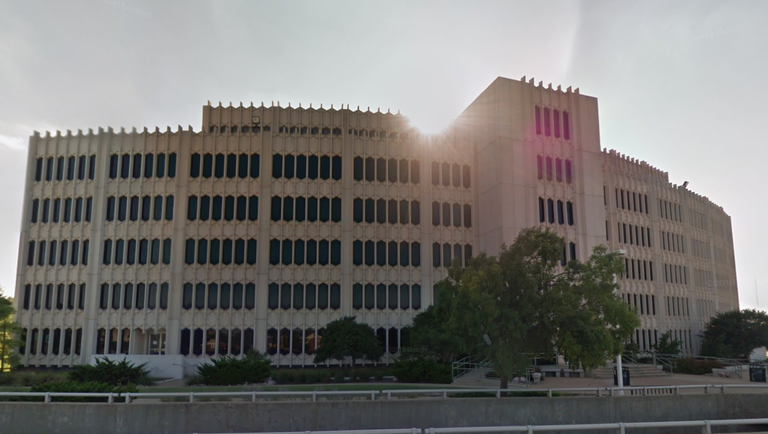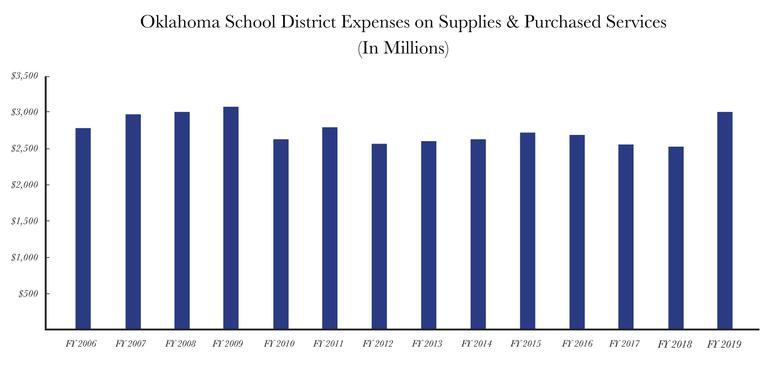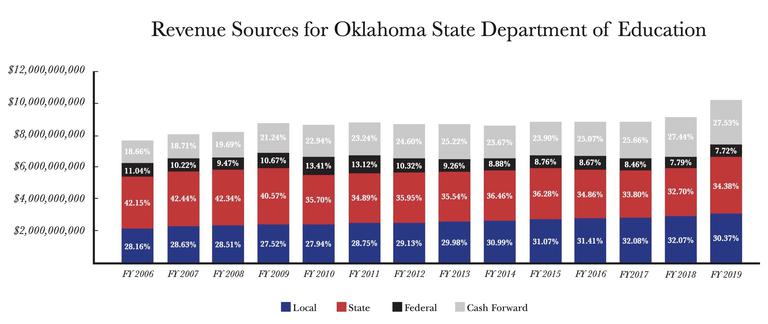
Budget & Tax , Education
Curtis Shelton | October 15, 2020
Department of Education budget request unrealistic
Curtis Shelton
The Oklahoma State Board of Education recently released its fiscal year 2022 budget request and is asking for an increase of $191 million over the current level. This would bring its state appropriation to $3.18 billion, the highest appropriation level in more than a decade.
The budget request comes after back-to-back years of increased funding in which the state legislature increased the Oklahoma State Department of Education (OSDE) appropriation by $500 million between fiscal year 2019 and 2020. As state revenues climbed to historic levels in fiscal year 2018 and 2019, state lawmakers directed much of the increased revenue to education. As a result, Oklahoma teacher salaries are now the highest in the region.
Officials from the Oklahoma State Board of Education say the additional funding would not meet all the department's needs and would only restore funding to 2009 levels. State Superintendent Joy Hofmeister said of the budget request, “it is definitely one that we know does not fully encompass what our classroom teachers and what our families want and need for their children in public school.”
Using 2009 as the benchmark is a common tactic, and it is an unrealistic one. Between 2007 to 2009 the state struggled through a historic recession, along with the rest of the country, but it wasn’t until fiscal year 2010 the state’s budget began to reflect the difficulties facing Oklahoma families and OSDE’s appropriation dropped. The chart below shows Oklahoma’s appropriation levels increasing in the years before the recession hit.

Data sources: Oklahoma Comprehensive Annual Financial Reports; inflation adjustments by author to 2020 dollars using the CPI inflation calculator
It’s also worth remembering that focusing only on state appropriations ignores the other public education revenue streams, such as federal and local funding. In 2009 there was a massive flood of federal money to Oklahoma schools because of the Great Recession. To prop up state budgets, the federal government sent an influx of cash to the states to avoid massive budget cuts. When accounting for all available revenue streams, the OSDE’s revenue has increased by $1.4 billion since fiscal year 2009 and $2.1 billion since 2006, before the surge of federal dollars. As that federal funding slowly declined, state and local funding has made up a greater and greater share of the education department’s budget, with more and more money being held over each year. As a result, state and local funding has grown well beyond 2009 levels, as the chart below shows.

Data sources: Oklahoma State Department of Education Expenditure and Revenue Reports; inflation adjustments by author to 2020 dollars using the CPI inflation calculator
The timing of the board’s request is odd, given that the state, along with the rest of the country, is dealing with the Covid-19 pandemic and the ensuing economic fallout. While Oklahoma has fared better than some states—thanks to Governor Kevin Stitt’s actions of reopening the state—it in no way means the state is immune to the consequences of an economic shutdown and national recession. After a mid-year shortfall of over $500 million in fiscal year 2020 and an expected shortfall of around $1 billion for fiscal year 2021, lawmakers will more than likely be looking for ways to cut spending rather than to increase agency budgets.
(Image: Google Maps/Google Earth)

Curtis Shelton
Policy Research Fellow
Curtis Shelton currently serves as a policy research fellow for OCPA with a focus on fiscal policy. Curtis graduated Oklahoma State University in 2016 with a Bachelors of Arts in Finance. Previously, he served as a summer intern at OCPA and spent time as a staff accountant for Sutherland Global Services.